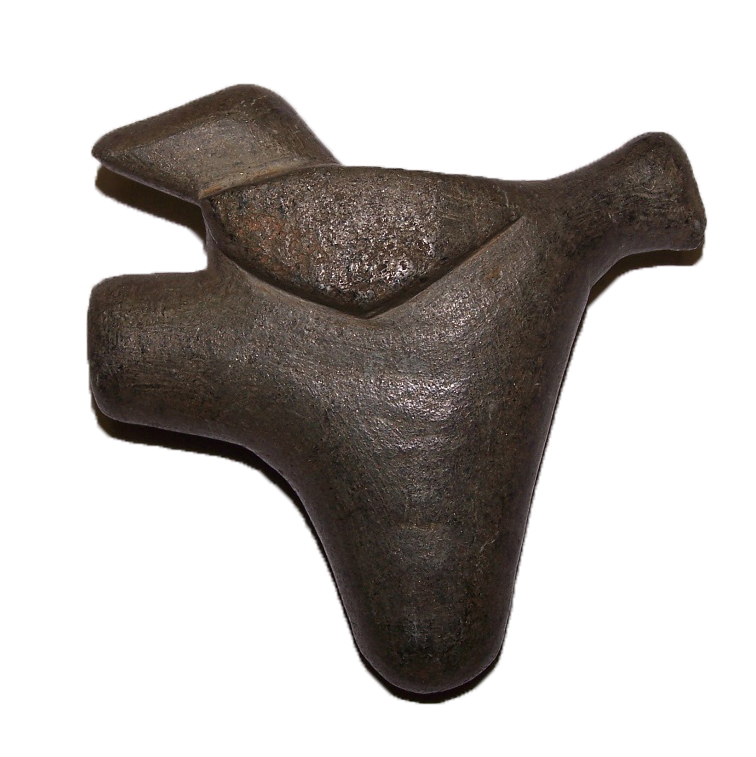Woodland Period Effigy Pipe

Smoking tobacco for religious and social reasons became widespread in North Carolina around 3000 years ago, at the beginning of what archaeologists call the Woodland Period. Though archaeologists rarely find the ancient plant itself, they do often turn up the stone pipes used for smoking. This example is from Clay County, NC, in the far western part of the state. It has been carved from steatite, also known as soapstone, into the form of a bird.
Archaeologists frequently use the term “effigy” to refer to representational art made by ancient people in North America. Pipes, sculptures, pottery, and earthen mounds that resemble animals or people are described as effigies to point out that the creators intended them to stand in for the real thing. This follows the more common way that the word “effigy” is used as a description for a model that is violently destroyed. For example, Guy Fawkes Day is celebrated in England by burning an effigy mannequin of the historic criminal.
But is this word accurate to describe the Native American artifacts? There is no evidence that representational artworks were symbolically destroyed—a key implication of the term “effigy.” Could a better word be used? Is there a word that conveys the actual cultural meaning and nuance of the bird-shaped pipe? The word “effigy,” along with dozens of other terms used in the Lam Museum database, was reviewed this summer by WFU sophomore Nick Beckom who initiated a long-term project to update archival descriptions to be more accurate, inclusive, and visitor-centered. You can explore our artifact database here.

